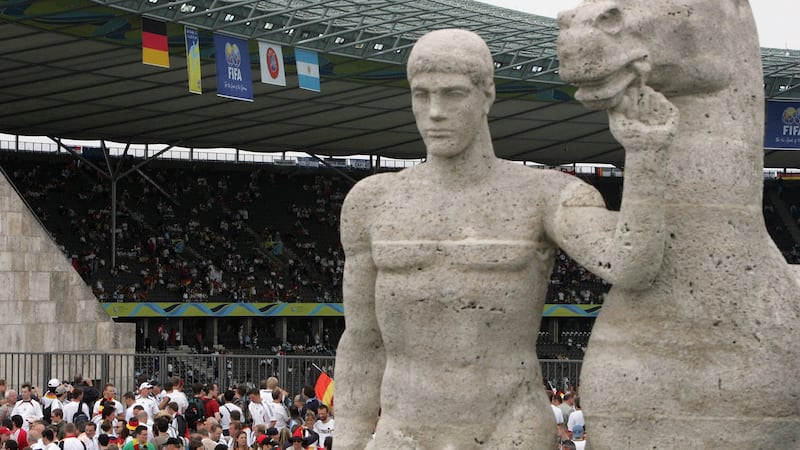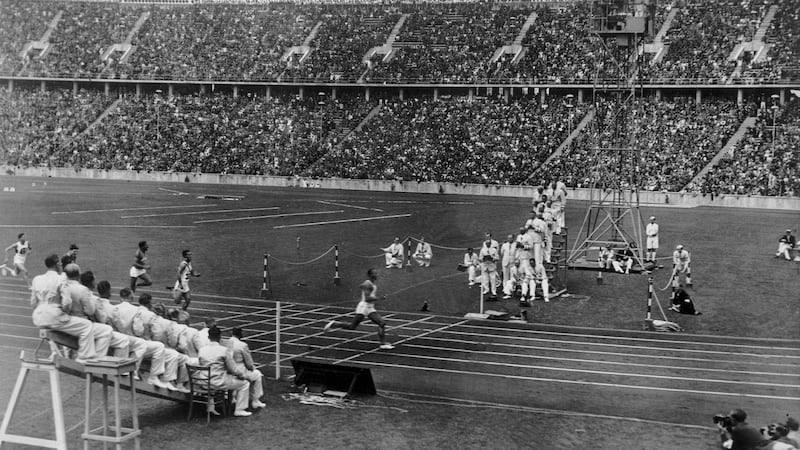The 2006 World Cup wasn’t even a week old when it began to dawn on the fans that the Germans had organised a tournament that touched on perfection.
Yes, the old stereotypes – efficiency, the organisation, the inherent willingness to stand in line – were all in evidence in the thought, civic planning and seemingly limitless expense behind the fan zones and venues in the 12 hosts cities, from Munich to Hamburg in the north.
The transport system worked a dream. They didn’t jack up the hotel rates. There was no panic, no fuss and no violence. The weather was glorious. The fans were treated like adults: there was no confiscation of this or booze limits on that. But it was the atmosphere that set it apart.
The month-long festival, from June 9th to July 9th, was backlit by a strange glow from the host fans: a combination of humility at having such an influx of international visitors and joy at an uncomplicated show of national pride in what it meant to belong to the reunified Germany.
It was the summer when Germans felt emboldened to wave the national flag. And it was an optimistic time: the Merkel administration still young, the national economy on the upswing. And if Die Manshafft were far from the perfect football team – over reliant in that tournament on the languid Michael Ballack, the Duracell athleticism of Philip Lahm and Bastian Schweinsteiger, the retro cool of Torsten Frings and the inability of Miroslav Klose to not score goals – they were fuelled by the fervour that came with hosting the tournament.
And they were managed by Jürgen Klinsmann, an authentic German football folk hero. Anything seemed possible.
The final was to be played in the Olympiastadion in Berlin. Of the 12 match venues, it was the most evocative and, of course, stands as a kind of daunting portal to the darkest period in German history. On one level, the stadium is a monument to the monstrous vanity of the Third Reich, built as an architectural showpiece for the 1936 Olympic Games. Because it was built in the Grunewald forest, just outside Berlin, it was spared the worst of the aerial bombardments.
As Europe took shape after the Potsdam agreement and Berliners adapted to life in a split city that was annexed in the new East Germany, the fate of a sports stadium was low-priority. The Olympiastadion was just there. Allied forces appropriated some of the vast 300 acres afterwards. Hertha Berlin played games there. The stadium was used for three games when West Germany hosted the 1974 World Cup.

The stadium and its vast surrounds came to look dated. Only in the late 1990s, after Germany had won the bid to host the 2006 tournament, did its future come up for debate even as the stadium was beginning to show its decades. Should it be modernised? Should it be destroyed? Should it be left to fall into ruin? In the end, the decision was made to renovate the place at a cost of $280 million.
“You can’t overcome history by destroying it,” remarked one of the architects working on the project. “We have to overcome our role in history by demonstrating it.”
The alterations were significant: the surface was lowered by some eight feet to make it more amenable to football and the lower portion of the spectator seating entirely remodelled. A gorgeous, sleek roof was added to the old amphitheatre design. But the super-structure remained intact and the vision of the remodelled Olympiastadion was very much true to Werner March’s original building.
And it made some Germans uncomfortable, not least the presence of the ersatz-Greek statues sculpted by Arno Breker, favoured by Adolf Hitler and the Nazi architect Albert Speer. There were calls to either remove statues such as the Female Victor or The Decathlete – or at least cover them up.
Ralph Giordano, a German-Jewish novelist, told the New York Times in May 2006 that they statues were "ugly and deceitful" and covering them up would be too symbolic.
The debate was an awkward prelude to the tournament and plans for an ambitious opening gala were abandoned after poor ticket sales, with a more modest ceremony pencilled in for Munich instead. But the statues remained on view as tens of thousands of international visitors took the trams out of the city to the stadium for Ukraine v Tunisia, Sweden v Paraguay, Brazil v Croatia and Ecuador against the hosts.
And it was a risky thing to do. Even with the refurbishments and the new sleek hospitality restaurants and the merchandise stalls and the summer techno sounds on the loudspeakers and everyone in party mood, there is something steadfastly solemn and grave about the Olympiastadion. That’s partly down to the scale and grandeur of the stone façade. As a work of architecture the Olympiastadion is vast and truly spectacular.
Those gargantuan statues – stone cut naked torsos, stone cut lions, weathered with age – are both daunting and eerie. The Olympiastadion is not a city-centre arena nor is it plonked down in the midst of some outer-ring industrialised nightmare. The train out is a slow, sedate spin through suburbia giving way to countryside and the walk through the old Olympic park, which covers some 300 areas and is dusty and unglamorous and quiet.

You go to the Olympiastadion: it is not on the way to anywhere else. So it has the feel of a pilgrimage. And, of course, the near universal knowledge of what the place represented is overwhelming. Very little has changed from the images preserved in Olympia, the Leni Riefenstahl propaganda film about those notorious 1936 Olympics.
There are the vast towers, there is the entrentribune where Hitler gazed imperiously across the stadium, there is the metal cauldron which held the flame and the colonnades remain the same.
It is a living, functional museum piece. And, of course, visitors can't help but think of the stadium's deathless moment: the gold medal races won by America's Jesse Owens in what was the most eloquent and devastating rebuke of the Third Reich's Aryan supremacy fantasy imaginable. The 1936 Olympics was the Nazi party's last international charm offensive, with the city's anti-Semitism largely disguised for the fortnight.
Germany "won" those Olympics on the medal table. But the stadium is remembered only as the location of Hitler's embarrassment: the place where he was forced to sit and seethe and do nothing while Owens triumphed.
"White humanity should be ashamed," Joseph Goebbels thundered in his diary. The symbolism of Owens's race has been magnified over the passing decades.
And for the vast majority of visitors who saw the Olympiastadion for the first time during the World Cup, the place left an indelible impression. I’ve never come across such an imposing sports theatre in my life. Even on hot gorgeous summer days, there is something about it that feels permanently in shadow. And when you are in the stadium, the events of 1936 and the nightmare that was about to grip all of Europe does not seem so distant.
A year after the World Cup, Barbara Streisand played the Olympiastadion in what was her first tour of Germany. In 2015, the stadium hosted the 14th Maccabi Games, held for Jewish athletes. The Olympiastadion stands as one of the most intact physical symbols of the Nazi regime. But it has also been successfully reclaimed by contemporary Germany as both an unforgettable symbol of the incalculable devastation caused by Hitler's Germany and as a tribute to one of the most evocative stands against his diabolical regime.
It felt somehow right that Germany bowed out in the semi-final: they arguably overachieved in giving the hosts an entertaining ride. But the final belonged to other European football bluebloods: the remorseless Italians against a France side playing to the orchestral manoeuvres of Zinedine Zidane. And if it wasn't the best World Cup final, it features prominently in the ranks of the unforgettable. The abiding image is not of Italy, the winners, but rather of Zidane coolly walking away from the arena after receiving that red card for a hot-tempered, retaliatory head-butt delivered to Italy's teak-tough centre back Marco Matterazzi.
The Italian said something the Frenchman deemed unforgiveable and long into retirement, Zidane vowed that he’d rather die than apologise for his action. Eighty years after Jesse Owens summer, the Olympiastadion hadn’t lost its capacity to produce Greek drama.













